Pediatric clinical examination is a specialized process requiring tailored techniques and skills to assess children’s health. It combines thorough history-taking, physical inspection, and diagnostic tools to identify conditions early, ensuring effective care and treatment outcomes.
1.1 Importance of Pediatric Clinical Examination
Pediatric clinical examination is crucial for early detection of abnormalities, guiding management plans, and building trust with children and parents. It ensures timely interventions, improves outcomes, and aids in diagnosing congenital and acquired conditions. A thorough examination, combined with modern diagnostic tools, remains the cornerstone of effective pediatric care, as highlighted in resources like Pediatric Clinical Examination Made Easy.
1.2 Overview of Key Pediatric Clinical Examination Techniques
Pediatric clinical examination involves age-specific techniques, including general inspection, vital sign assessment, and system-specific evaluations. Tools like pulse oximetry and imaging aid in accurate diagnoses. A child-friendly approach, combining observation, history-taking, and physical assessment, ensures comprehensive care. These methods, detailed in resources like Pediatric Clinical Examination Made Easy, emphasize the importance of adaptability and precision in examining children.

Preparation for Pediatric Clinical Examination
Preparing for a pediatric exam involves creating a child-friendly environment and gathering essential tools. A calm, welcoming space and appropriate equipment ensure an effective and stress-free examination process.
2.1 Creating a Child-Friendly Environment
Creating a child-friendly environment involves using toys, cartoons, and soothing colors to reduce anxiety. Engaging parents in the process and ensuring privacy fosters trust. A calm, distraction-free space with age-appropriate tools helps children feel comfortable, making the examination process more effective and less stressful for both the child and the healthcare provider;
2.2 Essential Tools and Equipment for Examination
Essential tools for pediatric examination include a pediatric stethoscope, blood pressure cuff, pulse oximeter, and thermometers. Age-specific equipment, such as smaller blood pressure cuffs and otoscopes, ensures accurate assessments. Portable devices and non-invasive tools are preferred to minimize distress. Having these tools readily available streamlines the examination process, allowing for efficient and thorough patient evaluation while maintaining comfort and safety for children of all ages.
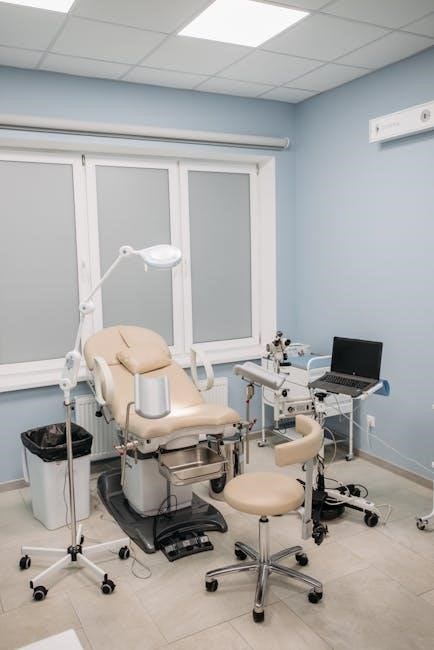
History Taking in Pediatric Clinical Examination
History taking involves gathering detailed information about the child’s symptoms, medical history, and developmental milestones, relying heavily on parental or caregiver input to guide diagnosis and management.
3.1 The Role of Parental and Caregiver Input
Parental and caregiver input is crucial in pediatric clinical examination, providing detailed information about the child’s symptoms, medical history, and developmental milestones. This collaboration aids in identifying potential issues early, ensuring accurate diagnoses and effective treatment plans. Their insights are invaluable for assessing behavioral patterns and overall well-being, making them key contributors to the examination process.
3.2 Key Questions to Ask During History Taking
Key questions during pediatric history taking include inquiries about the child’s symptoms, duration, severity, and associated signs. Asking about medical history, vaccinations, and family health provides context. Developmental milestones, feeding patterns, and behavioral changes are essential. Open-ended questions allow parents to share concerns, ensuring a comprehensive understanding of the child’s condition for accurate diagnosis and appropriate management.

Physical Examination Techniques in Pediatrics
Pediatric physical examinations require age-appropriate techniques, including general inspection and system-specific assessments. Tools like pulse oximetry and imaging aid in accurate diagnoses, ensuring comprehensive and effective patient care.
4.1 General Inspection and Vital Signs
General inspection in pediatrics involves observing a child’s overall appearance, growth, and development. Vital signs, such as heart rate, respiratory rate, and blood pressure, are measured to assess health status. These initial steps help identify abnormalities early, guiding further examination. Age-specific norms are crucial for accurate interpretation, ensuring comprehensive care and timely interventions when necessary.
4.2 System-Specific Examination (e.g., Respiratory, Cardiovascular)
A system-specific examination focuses on individual body systems, such as respiratory and cardiovascular. Techniques include auscultation for breath sounds and heart murmurs. These examinations are tailored to age, ensuring accurate assessments. For instance, respiratory exams may involve lung percussion, while cardiovascular exams use echocardiography. Early detection of anomalies enables targeted interventions, improving patient outcomes significantly in pediatric care settings.
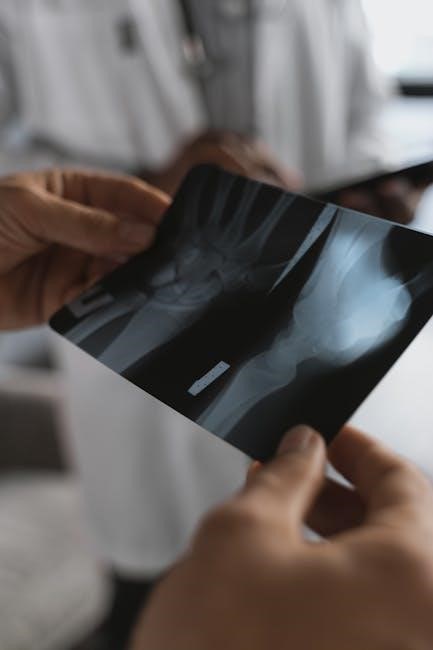
Diagnostic Value of Clinical Examination
Clinical examination combines findings with diagnostic tools like pulse oximetry and imaging, enhancing accuracy. Case studies highlight its role in early detection, guiding timely interventions and improving outcomes.
5.1 Combining Clinical Findings with Diagnostic Tools
Clinical findings are enhanced by integrating diagnostic tools such as pulse oximetry and imaging. This combination improves accuracy in detecting conditions like congenital heart defects and structural anomalies. For instance, pulse oximetry helps identify critical heart issues, while imaging provides detailed organ views. Together, these methods streamline diagnosis, enabling targeted interventions and better patient outcomes in pediatric care.
5.2 Case Studies Highlighting the Importance of Clinical Examination
Case studies demonstrate the critical role of clinical examination in diagnosing pediatric conditions. For example, a 2-year-old with polymelia underwent successful examination and treatment, showcasing the importance of detailed assessment. Similarly, ulcerative colitis in children was effectively diagnosed through clinical findings combined with diagnostic tools, emphasizing the value of thorough examination in achieving accurate diagnoses and optimal outcomes.
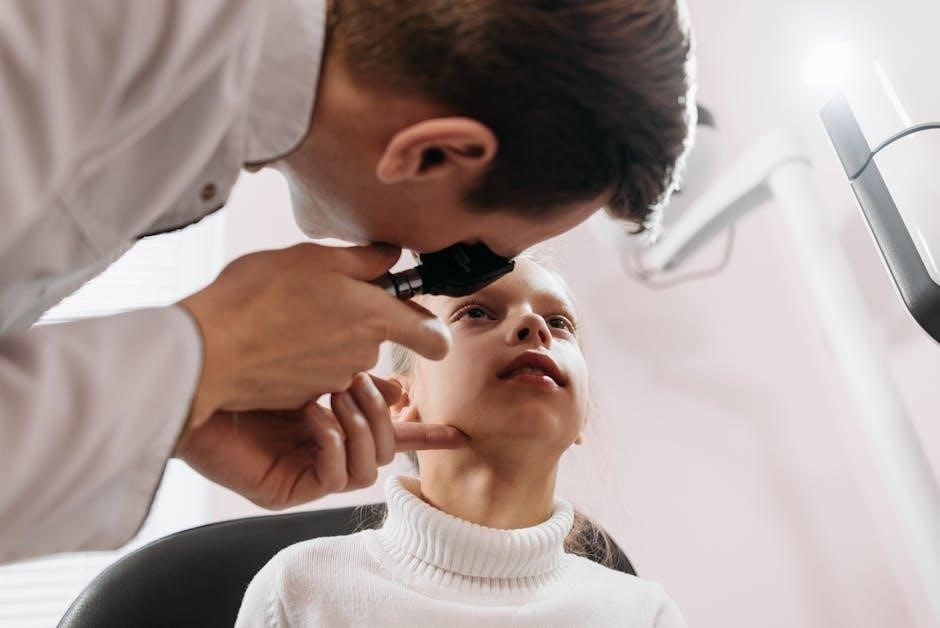
Clinical Examination of Specific Pediatric Conditions
Clinical examination plays a pivotal role in identifying congenital anomalies and acute conditions like abdominal issues in children, ensuring timely diagnosis and intervention for better health outcomes.
6.1 Common Congenital Anomalies and Their Detection
Congenital anomalies, such as heart defects and neural tube defects, are often detected through thorough clinical examinations. Techniques like pulse oximetry and imaging help identify these conditions early, ensuring timely intervention. Case studies highlight the importance of combining physical findings with diagnostic tools for accurate detection and management of congenital abnormalities in pediatric patients.
6.2 Acute Abdominal Conditions in Children
Acute abdominal conditions in children require prompt diagnosis to prevent complications. Clinical examination techniques, such as palpation and auscultation, are essential for identifying issues like appendicitis or intestinal obstruction. Diagnostic imaging, including ultrasonography, aids in confirming diagnoses. Early detection through thorough physical exams ensures timely intervention, significantly improving outcomes in pediatric care.
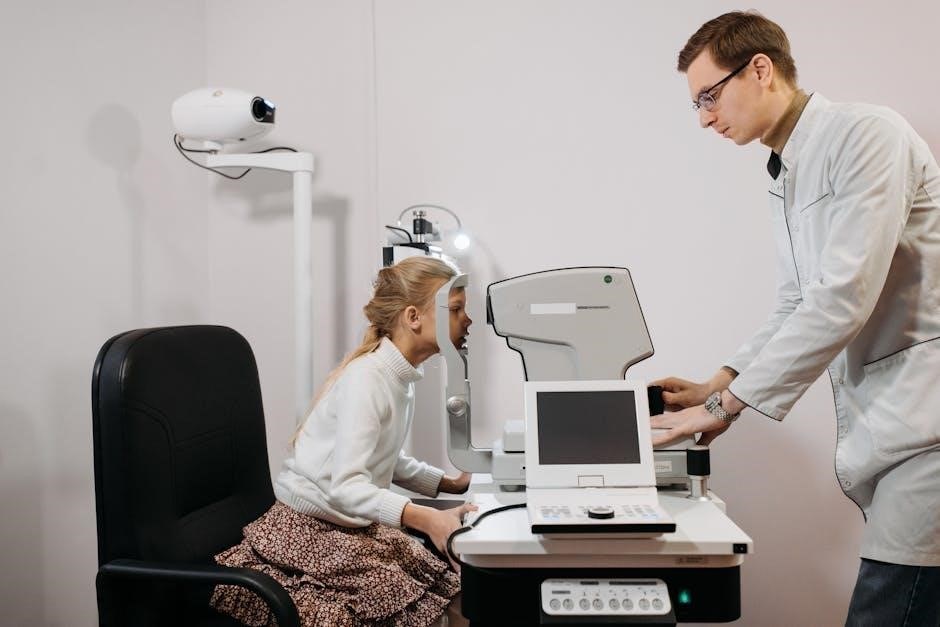
Use of Modern Diagnostic Tools in Pediatrics
Modern diagnostic tools like pulse oximetry and advanced imaging techniques enhance accuracy in pediatric care, aiding in early detection of congenital heart diseases and acute abdominal conditions.
7.1 Role of Pulse Oximetry and Imaging Techniques
Pulse oximetry is a non-invasive tool for monitoring oxygen saturation, crucial in detecting critical congenital heart diseases early. Imaging techniques like MRI and ultrasonography provide detailed insights into organ structures, aiding in diagnosing acute abdominal conditions and cardiac anomalies without invasive procedures, thus enhancing diagnostic accuracy and patient outcomes.
7;2 Advances in Pediatric Diagnostic Imaging
Advances in pediatric diagnostic imaging include high-resolution ultrasonography and MRI, enhancing visualization of internal structures without radiation. These tools enable early detection of congenital anomalies and acute conditions, improving diagnostic accuracy. Modern imaging techniques reduce radiation exposure, making them safer for children, while providing detailed insights into organ function and structure, aiding in precise treatment planning and better patient outcomes.

Clinical Examination in Neonatology
Clinical examination in neonatology focuses on assessing newborns’ physiological adaptation to life outside the womb, monitoring vital signs, and detecting congenital anomalies or conditions like respiratory distress or heart defects early to ensure timely intervention and improve outcomes.
8.1 Special Considerations for Neonatal Examination
Neonatal examination requires a gentle, systematic approach to assess newborns’ health, focusing on vital signs, congenital anomalies, and signs of distress. Monitoring for apnea, jaundice, or feeding difficulties is crucial. A thorough examination helps identify conditions early, ensuring timely intervention and improving outcomes for newborns.
8.2 Common Neonatal Conditions Identified Through Examination
Common neonatal conditions include congenital heart defects, respiratory distress syndrome, jaundice, and infections. Early detection through clinical signs like cyanosis, tachypnea, or abnormal reflexes is critical. Conditions such as cleft palate or neural tube defects may also be identified. Prompt diagnosis enables timely intervention, improving outcomes for newborns.
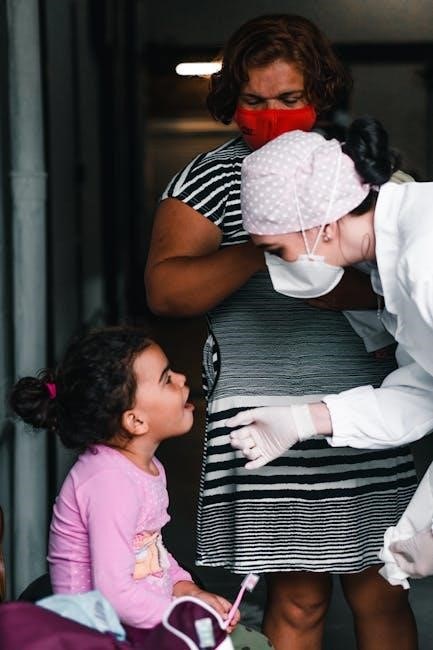
Communication Skills in Pediatric Clinical Examination
Effective communication is vital in pediatric care, building trust with children and parents. Clear dialogue aids in accurate diagnosis and compassionate care, ensuring better health outcomes.
9.1 Building Trust with Children and Parents
Building trust with children and parents is essential for effective pediatric care. Empathy, clear communication, and a non-threatening demeanor help establish rapport. Involving parents in the process and explaining procedures in simple terms fosters cooperation and reduces anxiety. A trusting relationship enhances the accuracy of history-taking and physical examination, leading to better diagnostic outcomes and improved patient care.
9.2 Effective Documentation of Examination Findings
Accurate and detailed documentation of pediatric examination findings is crucial for continuity of care. It ensures clear communication among healthcare providers and parents, aiding in tracking a child’s progress and informing future treatment decisions. Proper documentation also serves as a legal record and supports auditing and quality improvement processes in pediatric care settings.
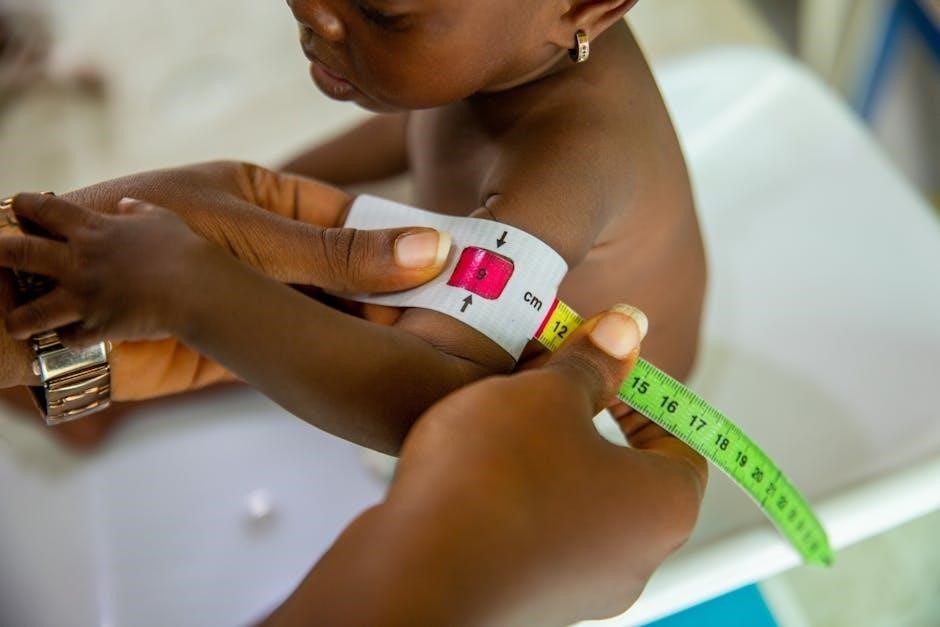
Age-Specific Considerations in Pediatric Examination
Pediatric examinations require age-specific approaches, adapting techniques for infants, children, and adolescents. Developmental stages and anatomical differences demand tailored methods to ensure accurate assessments and effective care.
10.1 Examination Techniques for Infants vs. Adolescents
Examination techniques vary significantly for infants and adolescents. Infants require gentle, non-invasive methods, focusing on observation and palpation, while adolescents need more detailed, communication-driven assessments. Techniques like head-to-toe inspection are common in infants, whereas adolescents benefit from privacy and involvement in the examination process, ensuring trust and accurate findings.
10.2 Developmental Assessment Across Different Age Groups
Developmental assessments adapt to the child’s age, focusing on milestones like motor skills, language, and social interactions. Infants are assessed through observation of reflexes and physical growth, while toddlers require interactive tests for cognitive and motor development. School-aged children undergo evaluations of academic and social abilities, and adolescents are assessed for pubertal changes and emotional maturity, ensuring timely interventions and guiding parental support.
Clinical Examination in Pediatric Surgery
Clinical examination in pediatric surgery involves preoperative assessments, postoperative care evaluations, and identifying surgical conditions through detailed physical inspections and diagnostic tools to ensure optimal surgical outcomes for children.
11.1 Preoperative and Postoperative Examination Techniques
Preoperative exams assess vital signs, airway patency, and surgical site readiness in children. Postoperative care includes monitoring for pain, infection, and recovery progress. Techniques vary for infants and adolescents, ensuring age-appropriate evaluations. These examinations are crucial for identifying risks and ensuring safe surgical outcomes, tailored to each child’s unique needs and developmental stage.
11.2 Surgical Conditions Commonly Identified Through Examination
Surgical conditions in children often include congenital anomalies, appendicitis, and intussusception. Clinical exams help identify these issues through signs like abdominal tenderness, palpable masses, or respiratory distress. Early detection via thorough examination ensures timely surgical intervention, improving outcomes for children with conditions requiring operative care.
Future Directions in Pediatric Clinical Examination
Telemedicine integration and advancements in imaging techniques are reshaping pediatric clinical examination, enhancing accessibility and diagnostic precision for children worldwide.
12.1 Integration of Telemedicine in Pediatric Care
Telemedicine is revolutionizing pediatric care by enabling remote consultations, reducing the need for in-person visits, and improving access to specialized care, especially in rural areas. It allows real-time monitoring of vital signs and facilitates the sharing of diagnostic data, enhancing early detection and management of conditions. This approach also supports parents in monitoring their child’s health remotely, making pediatric clinical examinations more efficient and accessible while maintaining high-quality care.
12.2 Emerging Trends in Clinical Examination Techniques
Emerging trends in pediatric clinical examination include the integration of artificial intelligence for diagnostic accuracy, portable diagnostic devices, and advanced imaging techniques. These innovations enhance the precision of physical examinations, reduce reliance on invasive procedures, and enable early detection of conditions. Additionally, handheld ultrasound devices and telemedicine platforms are transforming how clinicians assess and monitor pediatric patients, improving accessibility and outcomes.




